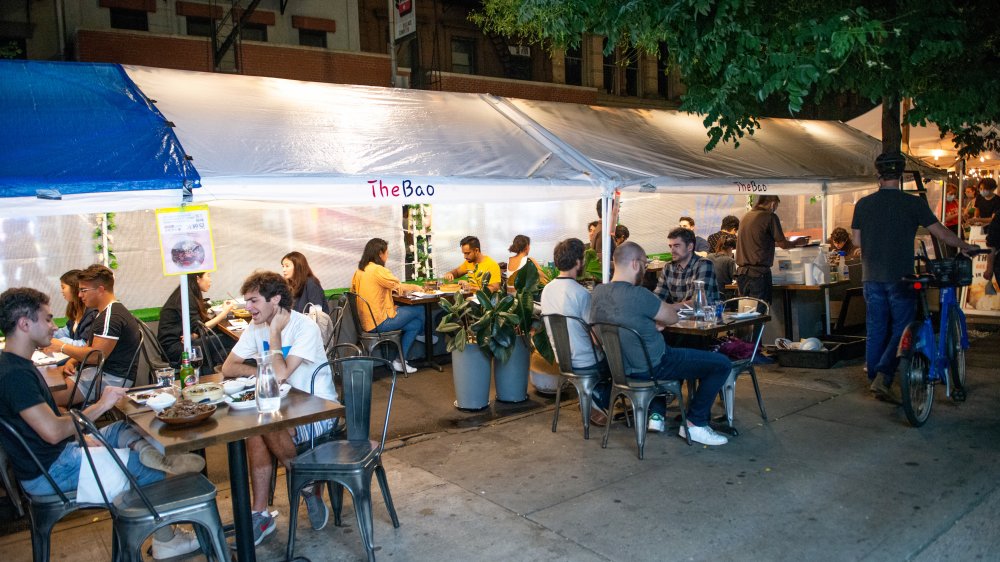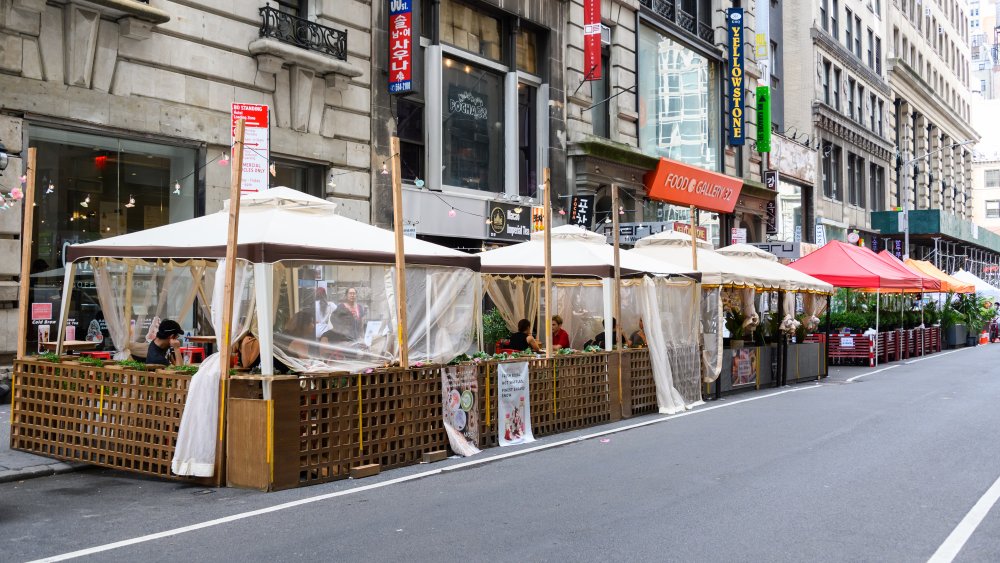Are Restaurants' Outdoor Dining Tents Really COVID-Safe?
Eating outdoors was an easy thing to do when the temperatures were higher and the wind less biting and cold; but with winter just around the corner, some restaurants appear to be considering different options in order to make sure eating out continues to be a thing in the midst of the coronavirus pandemic. While some restaurants are installing food-safe fogs, UVC lights that can kill germs, and hospital-grade air filters (via Washingtonian), others are looking at installing plastic bubbles to enclose chairs and tables (via CNBC). But are these options good enough to keep a potential coronavirus infection at bay?
It depends, says Jeffrey Siegel, a University of Toronto professor of civil engineering, particularly where structures like igloos and bubbles are concerned. "As [structures] become more fully enclosed, they become the same as an indoor environment or in some cases, worse, with a relatively closed volume of air," Siegel tells The Wall Street Journal. Iahn Gonsenhauser, the chief quality and patient safety officer at the Ohio State University Wexner Medical Center, agrees; Gonsenhauser points out that "Enclosed spaces defeat the purpose of outdoor seating for Covid purposes." Scientists are particularly worried about poor air circulation, proximity to other diners, and the potential of eating in a poorly ventilated space.
There are ways to eat out safely during the pandemic
Siegel tells The Wall Street Journal that in order to eat outdoors safely during the cold winter months, you might just want to keep a jacket and warmers on and look for outdoor seating areas with at least two exposed sides, which will offer the breeze an opportunity to flush out potentially contaminated air. If you really want to take on outdoor seating and a restaurant is only exposed on one side, the professor recommends sitting closest to where the fresh air blows. If the outdoor space is built for warmth and not optimal ventilation, you may even be better off eating inside the restaurant itself, since they could be equipped with better air filters and enjoy better airflow as a result.
If you do opt to eat outdoors, Gonsenhauser says diners eating in private greenhouses and structures are safer because they are protected from nearby tables — individuals just need to sit at least three feet away from people they don't live with and wear a mask at all times when not eating and drinking. Structures also need to be aired out for at least 15 minutes between parties, and high-touch surfaces (including walls) need to be wiped down properly, because "you don't want to be bumping anything with the potential to have collected particles."

